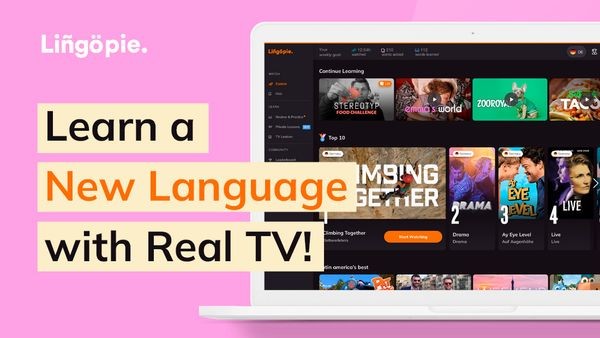Can You Learn A Language Watching Tv? Absolutely! Immersing yourself in foreign language television can significantly boost your comprehension, vocabulary, and even pronunciation. However, simply passively watching won’t magically transform you into a fluent speaker. This article dives into the science-backed strategies that turn your Netflix habit into a powerful language learning tool.
The Science Behind Language Learning and Television
Recent research confirms the effectiveness of passive language acquisition through media consumption. Engaging narratives, authentic dialogue, and visual context create a memorable learning experience far surpassing traditional textbook methods. But how does it work? Several established language acquisition theories support this approach:
- Comprehensible Input: Learning occurs when exposed to language slightly above your current level, allowing you to deduce meaning through context. TV shows provide this ideal balance.
- Noticing Hypothesis: Consciously “noticing” linguistic features is crucial for acquisition. Actively watching, pausing, and repeating dialogue promotes this focused attention.
- Interactionist Theory: While not directly interactive, watching TV allows you to simulate conversations by predicting dialogue and formulating responses.
- Dual Coding Theory: Combining audio and visual input enhances retention. TV’s rich multimedia environment capitalizes on this principle.
Subtitles: Your Language Learning Ally
Subtitles play a pivotal role in maximizing your learning potential. Beginners can benefit from subtitles in their native language to grasp the overall meaning and gradually acclimate to the foreign language’s rhythm and sounds. As comprehension improves, switch to subtitles in the target language. This reinforces the connection between written and spoken words, enhancing vocabulary and reading skills.
Level Up: Watching Without Subtitles
For advanced learners, ditching subtitles entirely immerses you in authentic language use, honing listening comprehension and pronunciation. This challenge forces your brain to decipher meaning solely from auditory cues and contextual clues.
Strategies to Optimize Your TV Language Learning
Transform passive viewing into active learning with these proven techniques:
Choose Content Wisely
Select shows that genuinely interest you. Engaging content fuels motivation and sustained learning. Consider your proficiency level: beginners should opt for simpler storylines, while advanced learners can tackle complex narratives and rapid-fire dialogue.
Focus on High-Frequency Words
Prioritize mastering common words and phrases. Note recurring vocabulary, idioms, and grammatical structures. These building blocks form the foundation of fluency.
Break It Down
Divide episodes into manageable segments. Pause frequently to review subtitles, rewind challenging sections, and repeat dialogue aloud. This focused approach prevents overwhelm and facilitates deeper comprehension.
Active Repetition and Pronunciation
Mimic pronunciation by repeating phrases and words aloud. Utilize tools like Lingopie for instant pronunciation feedback and refine your accent.
Write and Speak
Keep a vocabulary journal. Jot down new words, phrases, and example sentences. Practice speaking aloud using your new vocabulary in original sentences.
Structured Learning
Create a study schedule. Dedicate specific time slots for focused watching and active learning activities. Set achievable goals for each session.
Practice Makes Perfect
Apply your learned skills through real-world conversations. Find language partners, join online communities, or engage in language exchange programs.
Choosing the Right Shows and Platforms
Tailor your viewing choices to your level and interests. Explore diverse genres, lengths, and platforms:
- Genre: Children’s shows offer simple language, comedies provide cultural insights, and action movies challenge advanced learners.
- Length: Short films suit beginners, while series and feature films cater to intermediate and advanced learners.
- Platform: Netflix, YouTube, and specialized language learning platforms like Lingopie offer a vast library of foreign language content.
Unlock Your Language Potential with Lingopie
Lingopie provides an immersive language learning experience through its extensive library of foreign language TV shows and movies. Interactive features like dual subtitles, transcripts, and quizzes accelerate your progress.
So, can you learn a language by watching TV? Yes! By implementing these strategies and utilizing the right resources, you can transform your screen time into a rewarding language learning journey. Start your free trial with Lingopie today and unlock your fluency potential.

